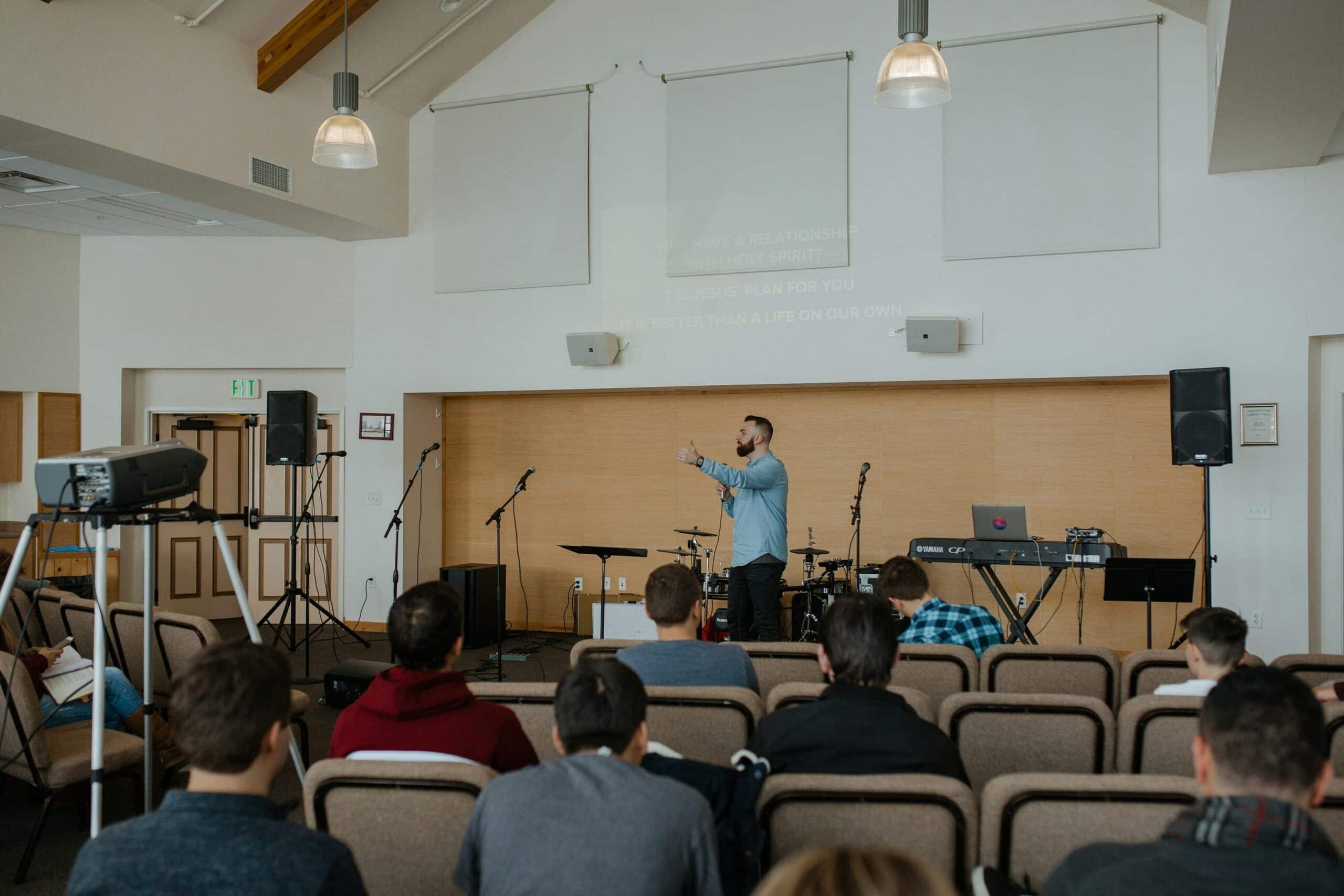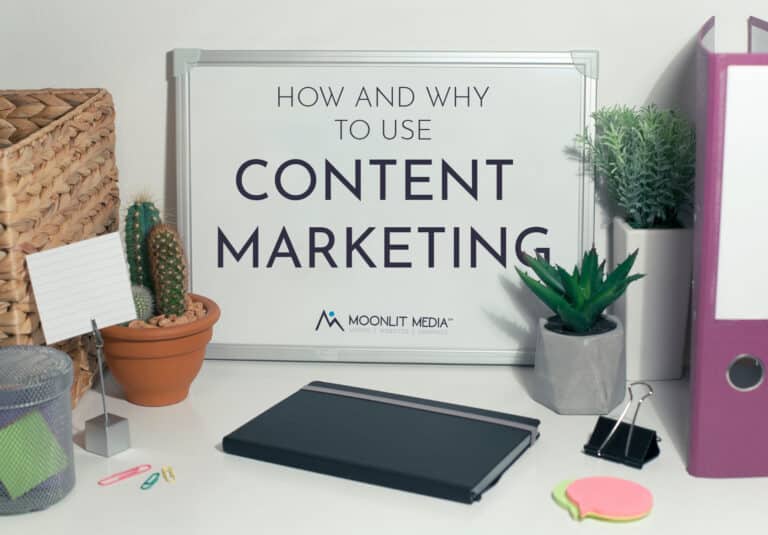Your Sunday sermon doesn’t have to end when the congregation files out. With the right setup, your message can reach people who are traveling for work, at home sick, or simply exploring your church from the comfort of their couch.
Church website design has evolved far beyond static pages with service times. Your digital presence now serves as an extension of your ministry, and video content is at the heart of that connection. When someone can easily find and watch your sermons online, they’re more likely to take that next step and visit in person.
The key is making your livestreams and sermon archives feel as welcoming as your church. Let’s walk through a few ways to embed videos that load quickly, look professional, and keep visitors engaged with your message.

Choose the Right Video Hosting Platform for Your Church
Not all streaming platforms are created equal, especially when it comes to church needs. Here are some of the best options:
- YouTube Live offers the widest reach and excellent search capabilities, making it easy for new visitors to discover your content.
- Facebook Live taps into your existing community and encourages real-time interaction during services.
- Vimeo provides a more polished, ad-free experience that many churches prefer for their professional appearance.
- Church Online Platform was designed specifically for congregations. It includes features like live chat prayer requests and connection cards that you won’t find on general live video platforms.
Think about how your congregation actually watches content. Are they scrolling through Facebook on their phones during lunch breaks? Watching on their Smart TV on Sunday evenings? Your platform choice should match their viewing habits, not just your technical preferences.
When choosing your video hosting platform, there are a few more things to keep in mind to make the most of your content. Look for platforms that offer automatic captions. This isn’t just about accessibility (though that’s crucial). Search engines can index captions, making your sermons more discoverable online. Your audience expects clear, crisp video, so HD-quality should be a non-negotiable. Lastly, be sure the platform provides clean embed codes that work seamlessly with your church website. These thoughtful choices can make a big difference in how your congregation experiences and engages with your content.
Embed Videos Without Slowing Down Your Site
Here’s where many churches get tripped up—they upload huge video files directly to their website and then wonder why their pages take forever to load. It’s a common mistake, but luckily, it’s an easy one to avoid. Instead of hosting the actual video files on your site, use embed codes from a video hosting platform (like those we mentioned above). Most platforms, like YouTube or Vimeo, provide simple iframe codes that you can copy and paste into your website. These codes create a video player on your page that streams the content from their servers, keeping your site fast and visitor-friendly.
Beyond just speed, embedding videos comes with some great perks. For example, platforms like Vimeo allow you to customize the player to match your church’s branding. Everything from the colors to the button styles can reflect your look. Also, make sure your video player is responsive, so it works seamlessly on any screen size. Whether someone’s watching on their phone, tablet, or computer, the video should adjust to fit perfectly. Nothing frustrates people quicker than a cut-off video on their mobile device.
And one more tip—skip the autoplay feature. While it might seem tempting to have videos start automatically, it can annoy visitors, especially those with limited data plans or people who are browsing in quiet environments. Instead, let people hit play when they’re ready. It’s a small courtesy that goes a long way in making your content approachable and enjoyable.

Create a Clean, Easy-to-Find Sermon Archive
Your sermon archive shouldn’t feel like rummaging through a digital attic. Sermons should be easy to find and even easier to browse. Start by creating a dedicated “Sermons” or “Watch” page that’s front and center in your main navigation. This sends a clear message to visitors that your video content is important. Organization is key here. Some churches like to sort by date, which is great for regular attendees who missed a week. Others organize by sermon series, perfect for newcomers looking to explore a specific topic. Or, you might categorize by speaker, which works well for larger teams. Choose a system that aligns best with your content and audience.
Visual elements can make all the difference. Adding thumbnail images makes browsing more inviting. A simple graphic with the sermon title and date can do the trick. Don’t forget to include short, compelling descriptions that draw people in. For example, “Practical steps for handling conflict in relationships” is much more engaging than “Pastor Mike talks.” If you have a large archive, consider adding a search function to help people quickly find what they’re looking for. Tags like “family,” “faith,” “grief,” or “community” are especially helpful for those searching for something specific. By making your archive clean, searchable, and visually appealing, you’re ensuring people can easily connect with the messages they need most.
Keep Your Media Organized Behind the Scenes
Good organization starts long before anyone hits play on your content. It begins behind the scenes with simple yet important steps, like creating a consistent naming convention for your video files. Stick to it religiously. For example, naming a file something like “2025-01-15_Finding_Peace_Pastor_Sarah” makes everything easy to find and logical for anyone maintaining your church website or media library.
Cloud storage platforms like Google Drive or Dropbox are perfect for internal file sharing, especially if multiple staff members or volunteers help with media management. Just remember to double-check permissions so that sensitive files don’t accidentally get shared with the wrong people. And please remember to backup your files. Technical problems happen, and losing months of sermons because of a server crash or accidental deletion is heartbreaking. Many churches use a simple system: original files in cloud storage, embedded copies on their streaming platform, and a backup drive stored off-site.
Don’t Forget Accessibility and User Experience
Here are some simple tips to make sure the videos on your church website offer a great experience for everyone who visits:
Captions and Transcripts
Captions and transcripts serve double duty. First, they make your content accessible to deaf and hard-of-hearing viewers. Secondly, they give search engines more text to index, which is great for your church website’s SEO. Many video hosting platforms now offer automatic captioning, though you might want to review and edit for accuracy, especially with biblical terms or names.
Clean Layouts
Design your video page layouts to minimize distractions. Flashing sidebars and pop-up notifications compete with your sermon for attention. Create clean, focused spaces where the message takes center stage.
Make Videos Easy to Share
Make sharing effortless. When someone feels moved by a sermon, they should be able to share it on social media with just a click or two. Most embed codes include sharing buttons, but double-check that they’re working and prominent.
Include a Strong Call to Action
Your call-to-action matters enormously. What do you want people to do after watching? Visit in person? Contact a pastor? Sign up for your newsletter? Make that next step crystal clear and easy to take. A simple “Join us this Sunday at 10 AM” with service details can turn online viewers into physical visitors.
Let Your Website Extend the Reach of Every Sermon
A thoughtfully embedded sermon video has the power to transform your church website from a simple online brochure into a dynamic ministry tool. By making it easy for people to access, watch, and share your message, you extend your church’s reach far beyond Sunday mornings. The technical details of embedding and sharing are essential, but they’re only a means to a greater end. Your ultimate goal is connection. It’s helping people encounter your message wherever they are, whenever they need it most.
When your church invests in a website that integrates media effortlessly, you’re opening doors for people to engage with your sermons and feel at home in your message. A clean, user-friendly website ensures that every visitor can find what they need without frustration, and that every sermon video feels as accessible as joining your physical community. With the right tools, your digital ministry can flourish, reaching hearts and minds far beyond the walls of your church.
Are you ready to elevate your church’s online presence? Moonlit Media specializes in helping churches design websites that are beautiful and purpose-driven. We know how to create an online experience that feels as warm and welcoming as your congregation. From seamless sermon video integration to intuitive layouts, we’ll help you make sure your message reaches every person who needs to hear it. Contact us today, and let’s start building a website designed to grow your ministry.








